Partitions
The use of various partition wall types helps delineate the type of work the space supports. Solid partitions carve out enclosed and semi-enclosed work settings, glass allows light to permeate further into the built environment, and soft partition walls and drapery offer physical separation within the open office without sacrificing flexibility. In keeping with IBM’s goal to pursue third-party sustainability certification for all major office construction and renovation projects, each partition option presents specific sustainability and wellness recommendations for its materiality based on LEED credits and WELL features.
Application diagram demo
Partition choices vary by the intended use of the space. Areas intended for focus work might feature solid partitions to cut down on visual distractions, for example. Study the diagram and table here for more information on typical use cases by partition type.
| Type | Usage |
|---|---|
| Glass office front | Glass office fronts are used on enclosed spaces to allow light to permeate the space and increase visual connectivity across the office. |
| Drywall | Drywall is a solid, fire-resistant wall panel. |
| Freestanding partitions | Freestanding partitions serve many purposes. They can be used as divider walls in parts of the open office that require spatial division, acoustic attenuation or surfaces on which to mount screens. |
| Drapery | Drapery can be used to temporarily close off open collaborative spaces to allow for additional privacy or closed conversation in open areas. |
| Core area walls | Core area walls fall within the purview of landlord specification. |
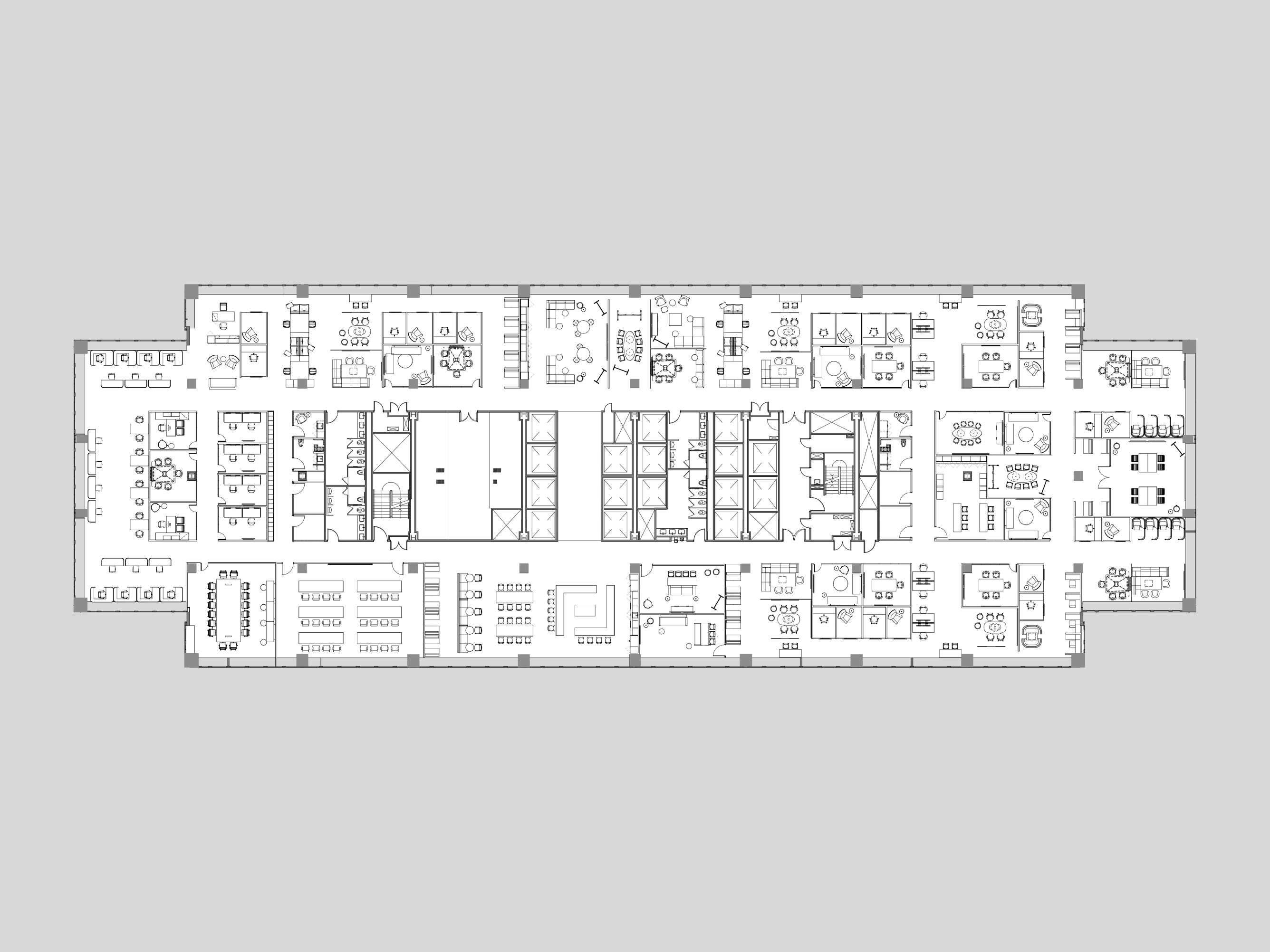
Glass office front
Using glass-front walls at enclosed offices, conference rooms and teaming spaces offers great benefits to the office environment. Glass allows natural light to flow and permeate into a greater number of rooms, even rooms near the building core. Implementation of these walls also allows for longer sight lines through the office, making the space appear larger.
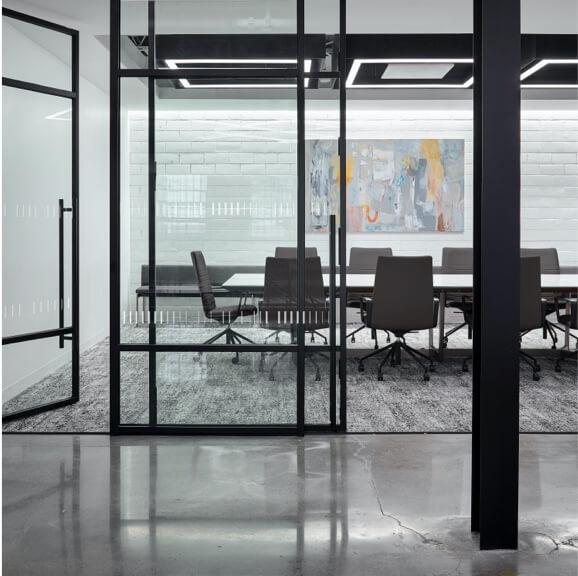
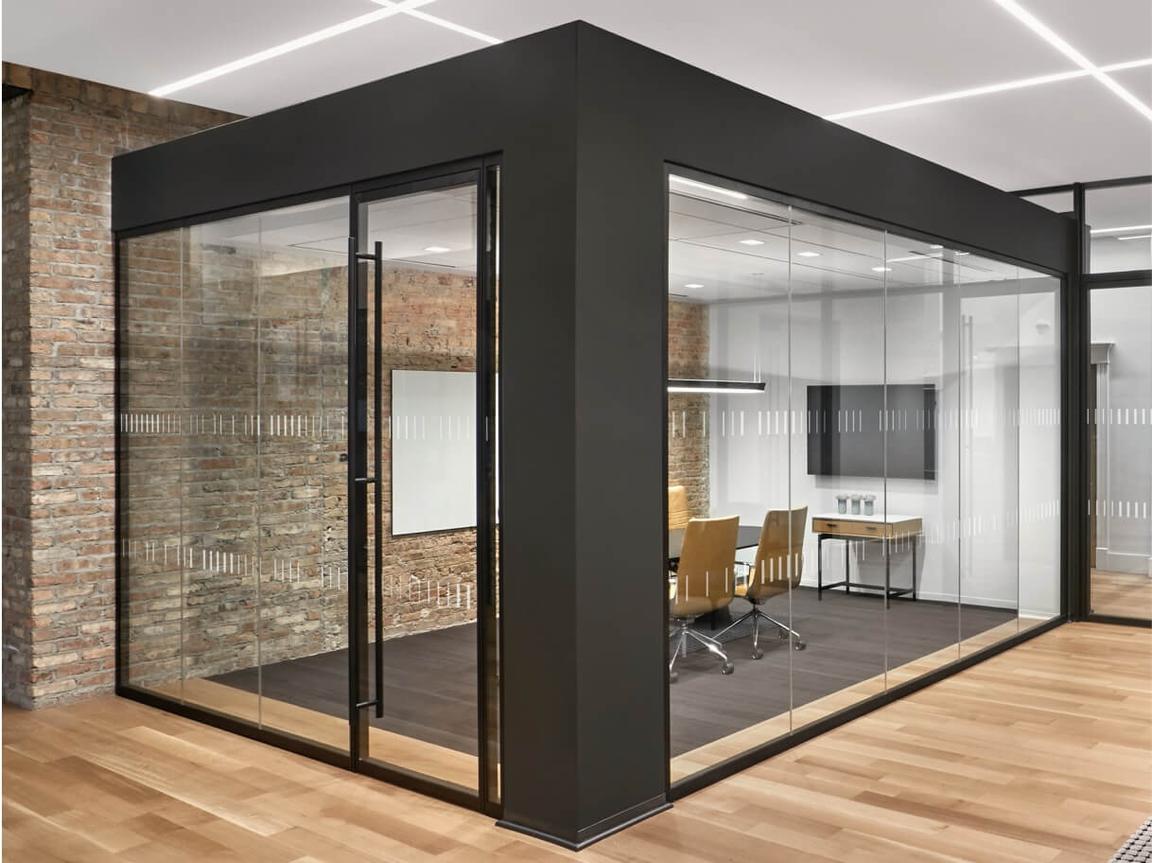

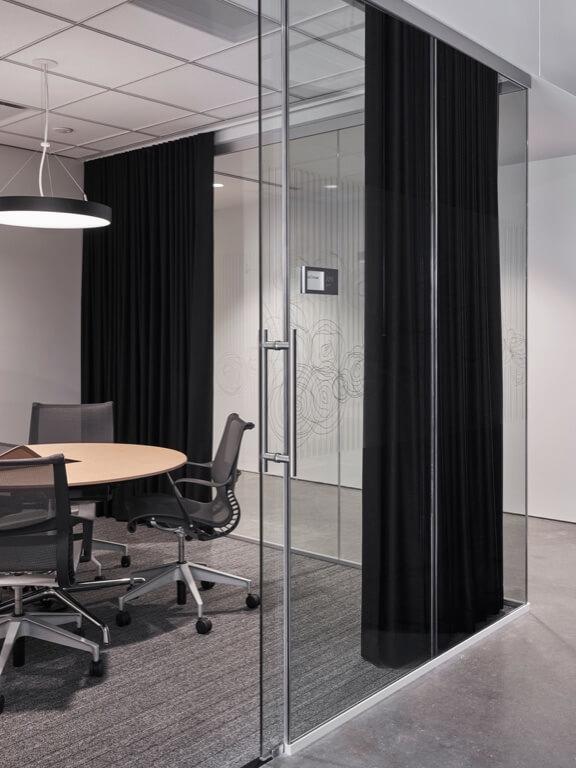
Sustainability and wellness recommendations
LEED and WELL
- Specify glass from manufacturers with EPDs to earn points towards LEED credit MRc3 building product disclosure and optimization – EPDs.
- Consider option 1 for MRc3 and an innovation point for exemplary performance.
Drywall
Solid gypsum-board walls provide fire resistance, acoustic attenuation and visual separation of space, and allow for the division of the open plan into enclosed rooms.

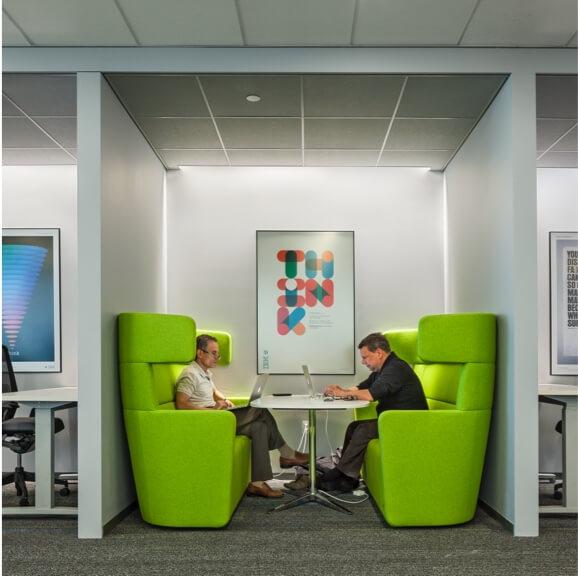
Sustainability and wellness recommendations
LEED and WELL:
- Establishing a construction and demolition waste plan is required by LEED’s materials and resources prerequisite MRp2. It includes a plan for the sorting and recycling of drywall to divert waste from landfills, which is important to IBM’s waste diversion goal.
- When pursuing high rates of diversion of demolition and construction waste from landfill, include this requirement in bidding documents for preconstruction services to ensure any applicable costs are incorporated into the initial budget.
- Specifying gypsum boards with high post-consumer recycled content may help achieve points towards LEED credit MRc4 building product disclosure and optimization – sourcing of raw materials.
- Consider option 2 for MRc4 and an innovation point for exemplary performance.
- Gypsum drywall boards frequently undergo VOC emissions testing. Specifying products with certified emissions results will contribute to LEED credit EQc2 low emitting materials and WELL X06 VOC restrictions.
- Consider a LEED v4.1 substitution for EQc2.
- Specifying gypsum wallboards that are Red List Free, have an HPD or are Cradle to Cradle Certified may contribute to WELL features X07 material transparency, X08 materials optimization and LEED MRc5 building product disclosure and optimization – material ingredients.
- Consider option 1 for MRc5.
Additional recommendations:
- Natural gypsum is considered a high-integrity mineral with potential for closed-loop recycling.
- Specify gypsum drywall with post-consumer recycled content.
- Contribute to efforts to expand the recycling of natural gypsum by properly sorting and recycling gypsum cutoffs during construction and scrapped gypsum generated by demolition.
- Gypsum is infinitely recyclable as long as it is not contaminated with other materials.
- Look for facilities that accept scrap gypsum and can partner with a manufacturing facility to enable a closed-loop process. If there are options within the region, consider including a diversion requirement and dedicated collection and hauling in the gypsum or construction and demolition waste management specifications.
- Some paperbacked gypsum wallboards use harmful biocides to resist mold.
- Look for products that disclose their ingredients to avoid biocides and other hazards
Freestanding partitions
Freestanding partitions offer an alternative to drywall in areas of the office that don’t require enclosed construction, but would benefit from visual or acoustic separation. They can also deliver power to work areas and provide a surface to attach screens, speakers or other collaboration technologies.

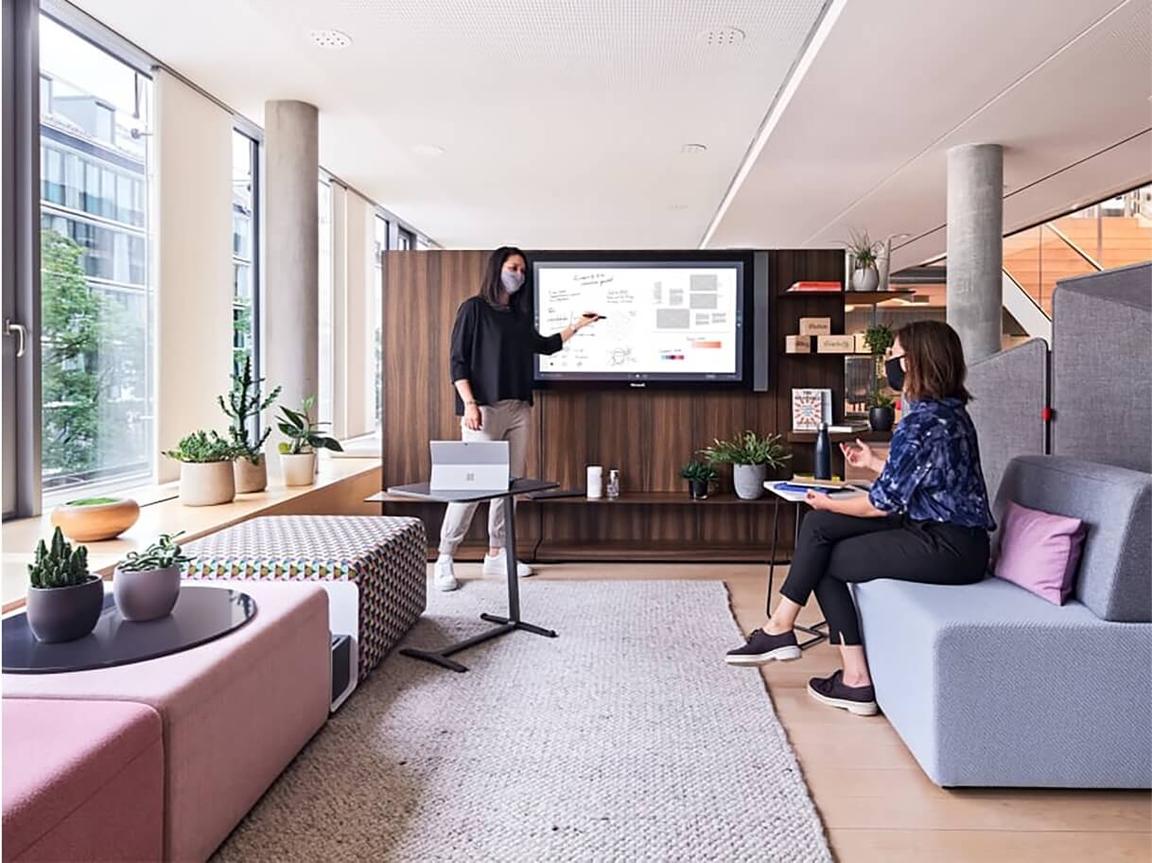
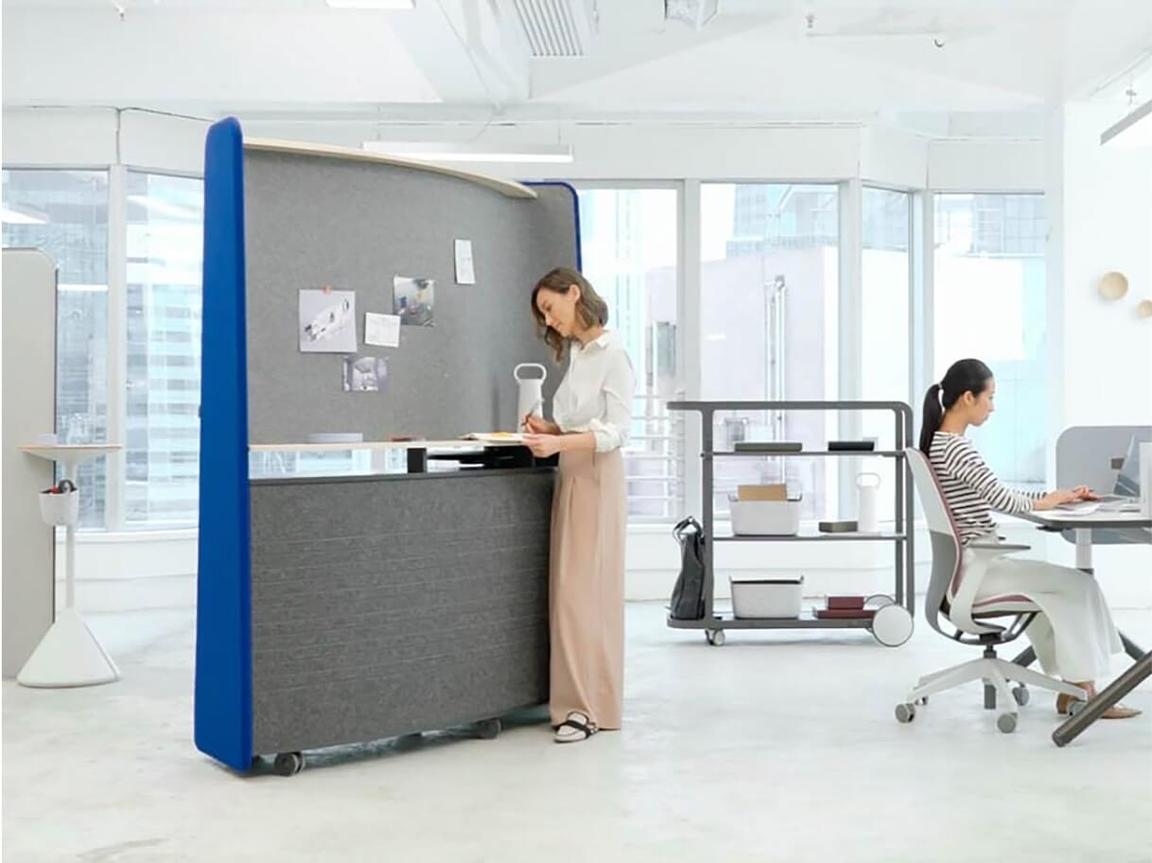
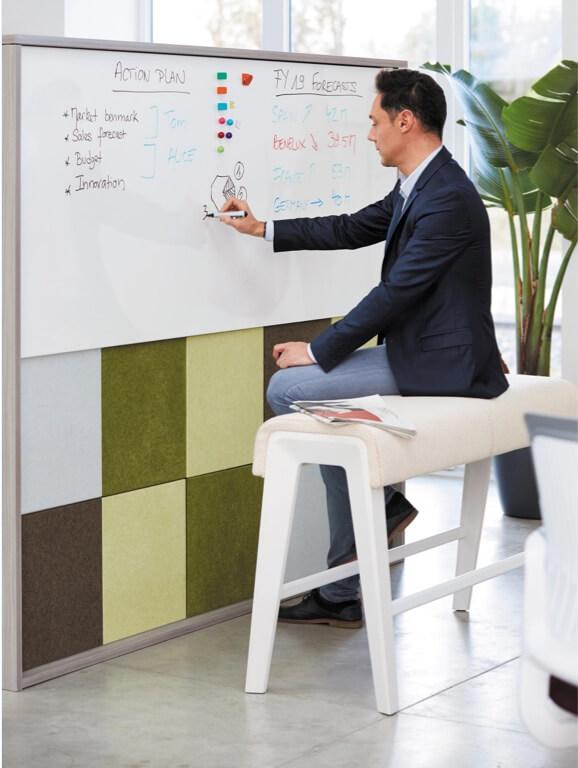
Drapery
Drapery offers IBM employees the opportunity to temporarily close off any open, collaborative spaces located within the open office area. Draperies are particularly beneficial when small teams are collaborating or conversing. These versatile partitions can be used as hanging, movable panels on a track with acoustical attenuation to allow for easy and optional privacy.
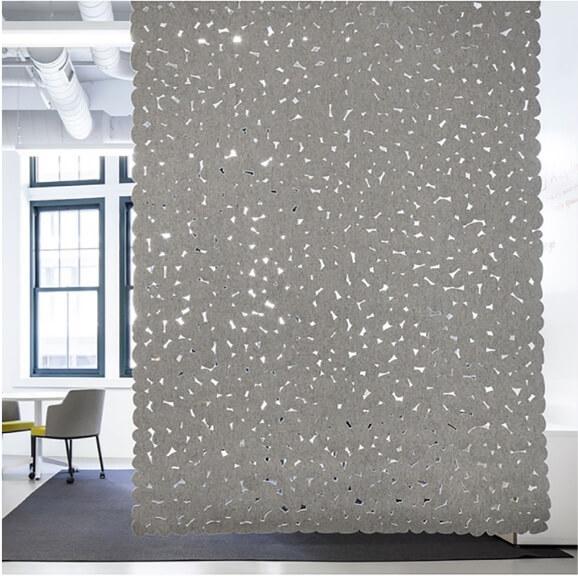
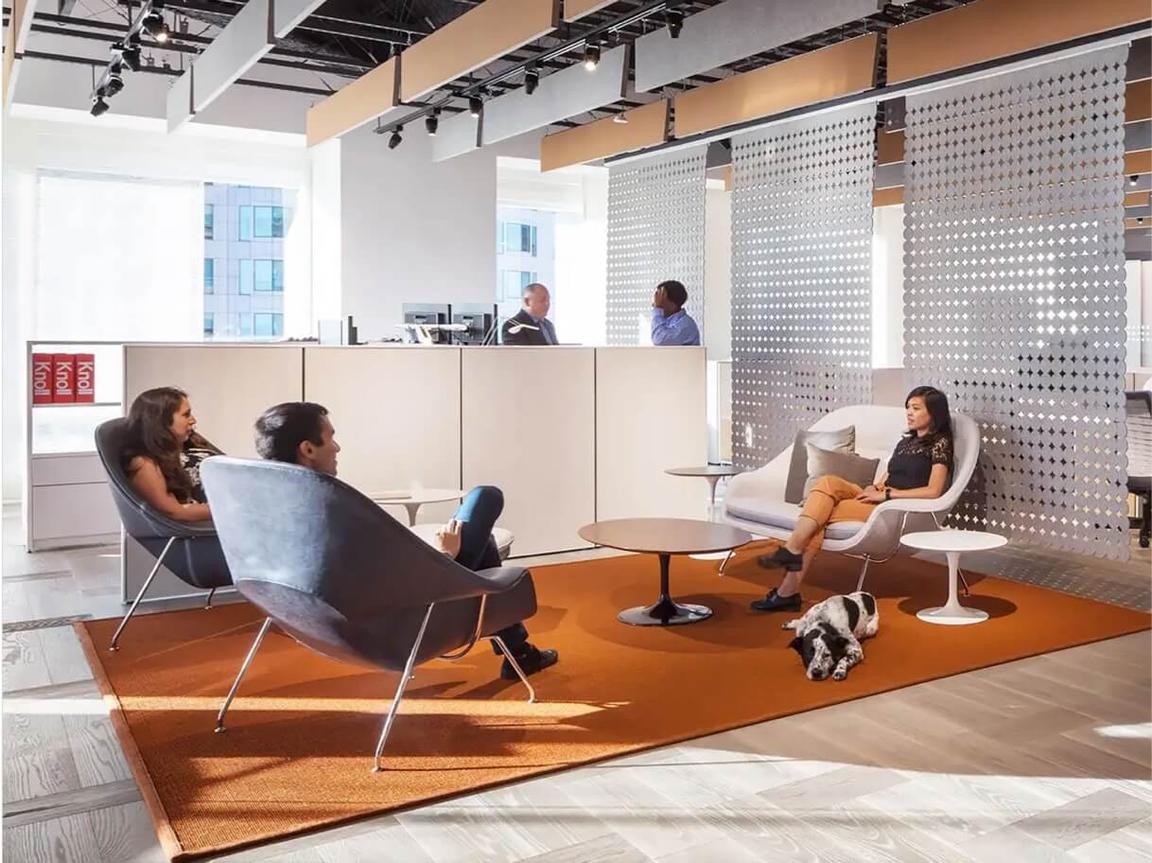
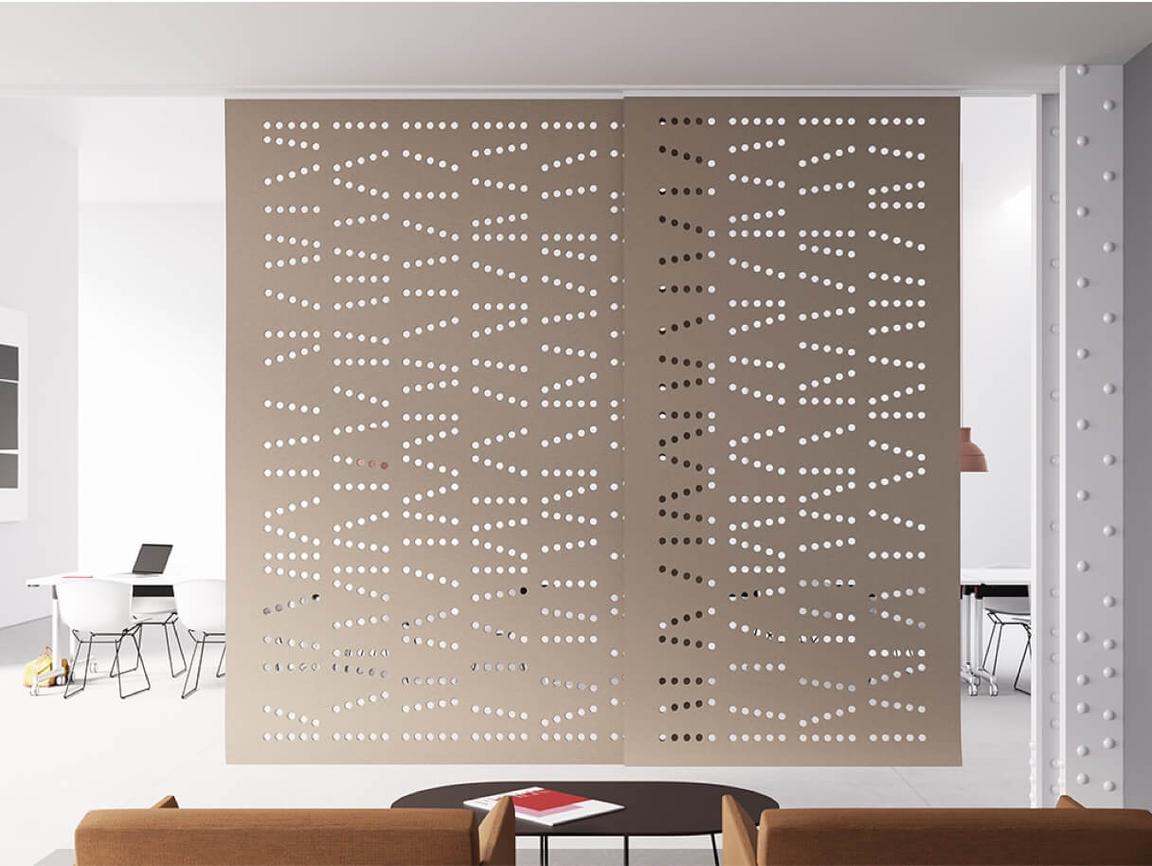

Sustainability and wellness recommendations
LEED and WELL:
- Specifying textiles with recycled or biobased content will contribute to LEED credit MRc4 — building product disclosure and optimization — sourcing of raw materials.
- Consider option 2 for MRc4.
- Many textiles have undergone VOC emissions testing and, therefore, contribute to earning points towards LEED credit EQc2 low emitting materials and WELL features X06 VOC restrictions.
- Consider a LEED v4.1 substitution for EQc2.
- LEED and WELL award points for permanently installed textiles that are Cradle to Cradle Certified under credit MRc5 building product disclosure and optimization – material ingredients.
- Consider option 1 and option 2 for MRc5.
Additional recommendations:
- Many synthetic textiles are made from PVC, which contains potentially toxic chemicals that may be released during production and incineration. PVC may also release toxic chemicals during its use phase as it may shed microplastics containing phthalates and bisphenols.
- Avoid textiles that contain PVC.
- Blended synthetic fibers are usually not able to be recycled because the fibers can’t be separated.
- Specify textiles with one fiber type to increase end-of-life recyclability.
- Textiles are frequently treated with flame retardants, stain and water repelling treatments, and antimicrobials — all of which may contain potentially toxic substances.
- Avoid textiles that mention being stain resistant, waterproof or antimicrobial.
- Cradle to Cradle Certified textiles are assessed for their water use and social fairness, in addition to other criteria.
- Look for this certification when specifying textiles.

